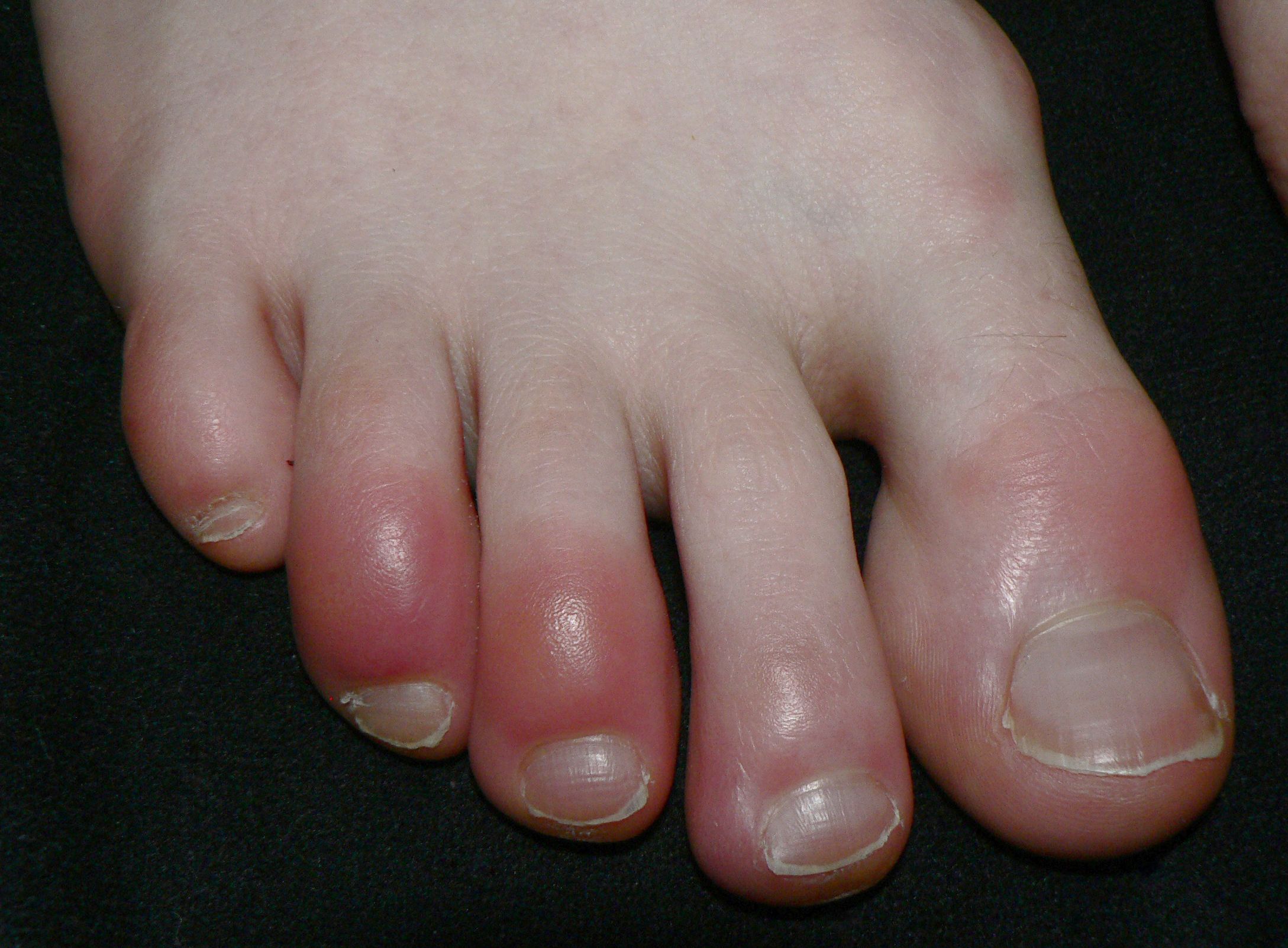Chilblains: Symptoms, Causes & Treatment
What are the symptoms of chilblains?
Chilblains, also known as pernio or cold sores, are a skin condition that occurs in response to cold temperatures. The symptoms of chilblains typically include:
- Redness: The affected area of skin may appear red or purple.
- Swelling: The skin may become swollen, tender, and itchy.
- Burning sensation: Some people with chilblains may experience a burning or tingling sensation in the affected area.
- Blisters: In some cases, blisters may develop on the skin.
- Ulcers: Severe cases of chilblains may result in the formation of ulcers (open sores) on the skin.
Chilblains most commonly occur on the fingers, toes, ears, or nose, and they typically develop several hours after exposure to cold temperatures. The symptoms of chilblains usually resolve on their own within a few weeks, and they rarely cause any long-term complications. However, in some cases, chilblains can become infected or lead to more serious complications, so it’s important to take steps to prevent and treat them. Keeping warm, avoiding prolonged exposure to cold temperatures, and wearing warm clothing and gloves can help prevent chilblains. If you develop chilblains, it’s important to keep the affected area clean and dry and to avoid scratching or irritating the skin. If the symptoms persist or are severe, it’s best to consult with a healthcare provider for proper evaluation and management.
What are the causes of chilblains?
Chilblains, also known as pernio or cold sores, are a skin condition that occurs in response to cold temperatures. The exact cause of chilblains is not well understood, but it is believed to be due to an abnormal response of the small blood vessels in the skin to cold exposure. When the skin is exposed to cold temperatures, the blood vessels constrict (narrow) to reduce heat loss from the body. However, in some people, this constriction of the blood vessels can lead to poor circulation and damage to the small blood vessels in the skin. When the skin is then rewarmed too quickly, the damaged blood vessels can leak fluid into the surrounding tissues, leading to inflammation and the development of chilblains.
Several factors may increase the risk of developing chilblains, including:
- Cold exposure: Chilblains are more common in cold, damp climates and during the colder months of the year.
- Poor circulation: People with poor circulation, such as those with peripheral artery disease or Raynaud’s disease, may be more prone to developing chilblains.
- Female gender: Chilblains are more common in women than in men, possibly due to differences in skin thickness and fat distribution.
- Family history: There may be a genetic predisposition to developing chilblains, as the condition tends to run in families.
- Certain medical conditions: People with certain medical conditions, such as lupus, diabetes, or anemia, may be more prone to developing chilblains.
- Smoking: Smoking can impair circulation and increase the risk of developing chilblains.
It’s important to note that while cold exposure is a common trigger for chilblains, not everyone who is exposed to cold temperatures will develop the condition. The exact reasons why some people are more prone to developing chilblains than others are not fully understood and may involve a combination of genetic, environmental, and individual factors.
What is the treatment for chilblains?
The treatment for chilblains, also known as pernio or cold sores, focuses on relieving symptoms and promoting healing. In most cases, chilblains will resolve on their own within a few weeks, but there are several steps you can take to help alleviate symptoms and speed up the healing process:
- Keep warm: Avoid further exposure to cold temperatures and keep the affected area warm. Dress warmly in layers and wear gloves, socks, and other protective clothing when outdoors in cold weather.
- Avoid heat: While it may be tempting to warm up the affected area quickly, avoid using direct heat sources such as heaters or hot water bottles, as this can cause further damage to the skin.
- Gentle rewarming: If the affected area becomes cold, rewarm it gently by placing it in warm (not hot) water or using warm packs. Avoid sudden temperature changes.
- Keep the skin dry: Moisture can aggravate chilblains, so keep the affected area clean and dry. Avoid wearing damp or tight-fitting shoes and socks.
- Elevate the affected area: If possible, elevate the affected area to reduce swelling and improve circulation.
- Moisturize: Use a gentle moisturizer to help soothe and protect the skin. Avoid harsh soaps and chemicals that can irritate the skin.
- Avoid scratching: To prevent infection, avoid scratching or rubbing the affected area, as this can break the skin and lead to complications.
- Over-the-counter creams: Over-the-counter creams containing corticosteroids or antihistamines may help reduce itching and inflammation. However, it’s best to consult with a healthcare provider before using any medication, especially on sensitive areas like the fingers and toes.
- Pain relief: Over-the-counter pain relievers such as acetaminophen or ibuprofen may help relieve pain and discomfort associated with chilblains.
If you have severe or persistent symptoms, or if you notice signs of infection such as increased pain, swelling, redness, or pus drainage, it’s important to consult with a healthcare provider. In some cases, prescription medications or other treatments may be needed to manage symptoms or prevent complications.




